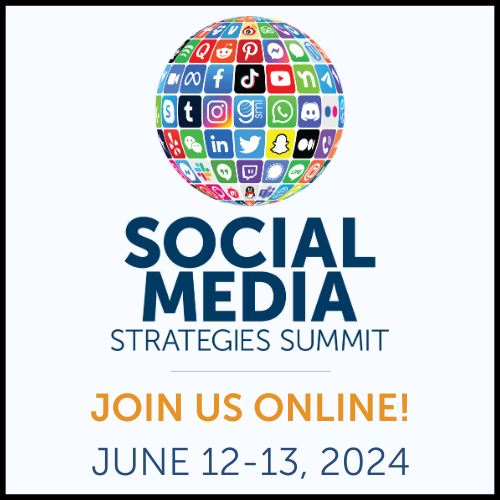It’s hard to remember when we weren’t all glued to social media. Yet the proportion of marketers using social media to reach new and existing audiences has risen every year since 2013:
With so much competition from other marketers, you must take the time to develop smart strategies for social media marketing to help you:
- Target the right people through the right channels
- Understand the role each platform plays in your path to conversion
- Define the types of content that work best on each platform
- Identify ways to leverage influencers and thought leaders on social media effectively
- Invest in the best social media tools to save time and money
We’ll cover all those points (and more) in our complete social media strategy creation guide.
Let’s get into it.
- TikTok Marketing Strategy
- Instagram Marketing Strategy
- Pinterest Marketing Strategy
- Reddit Marketing Strategy
- Facebook Marketing Strategy
- X (Formerly Twitter) Marketing Strategy
- LinkedIn Marketing Strategy
- Content Planning
- Content Creation
- Influencer Marketing Strategy
- Social Media Tools
TikTok Marketing Strategy
TikTok has about 1.2 billion monthly active users. As we all know, the platform is popular with younger audiences, with one in three users aged 25 to 34, while just one in four are aged 35 or over.
Want to create a fresh social media strategy for TikTok or optimize your existing strategy? Start with these fundamentals:
1. Analyze Your TikTok Audience
TikTok offers an exhaustive range of analytics that allow you to see under the hood of your audience insights. To find it, log in to your account, hover over your profile picture, and click View Analytics.
Select the Followers tab, and you’ll get access to a treasure trove of audience insights. Beyond basic demographic information, you can dig into your audience’s TikTok preferences, including:
- When your followers are most active. This invaluable data allows you to plan posts when your audience is most likely to see them.
- What videos they watch. You don’t have to make decisions based solely on which of your videos are the most popular. You can also see the videos they watched from other creators.
- What sounds they listen to. TikTok’s roots can be traced back to the defunct Musical.ly app, and music still plays a crucial role in the platform’s content. Choosing a trending soundtrack can boost the visibility of your videos.
2. Set TikTok Marketing Goals
TikTok is arguably more effective than any other platform when it comes to reaching new audiences because of its sky-high organic reach and an algorithm geared toward introducing users to new creators.
But what action do you want those users to take once you reach them?
Typically, brands leverage TikTok to drive sales. TikTok’s data suggests this is the best marketing use case for the platform, with 67% of users agreeing that TikTok has inspired them to shop — even when they weren’t planning to do so.
However, it’s not just about generating revenue. With 74% of users saying TikTok has inspired them to learn more about a product or brand, it’s also an excellent platform for building brand awareness.
3. Optimize Your TikTok Business Profile
Unless you’re running ads, the only way to drive TikTok users to your website is via the link on your profile page. So your profile must be up to scratch.
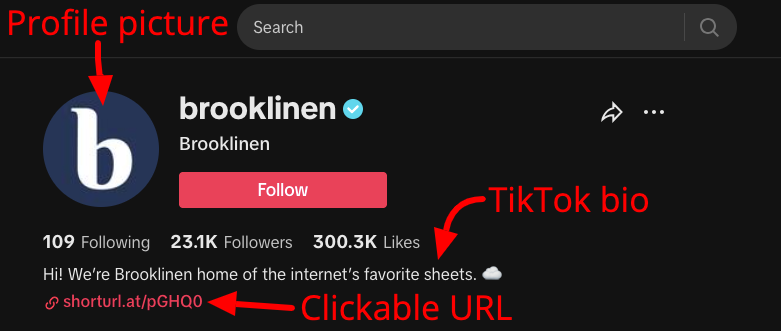
Get it right with these best practices:
- Choose your profile picture. Again, this will most likely be your logo, and it displays as a circular image and has recommended dimensions of 200 x 200 pixels.
- Add a short bio. And by “short,” we mean no longer than 80 characters. If you have a (brief) brand slogan, add it here.
- Pick the most relevant URL. You only get to choose one clickable URL in your profile, so make it count. Your homepage is always a safe bet, but if you’re running a campaign, consider linking to a dedicated landing page instead.
Read more about TikTok marketing strategy here:
Instagram Marketing Strategy
Part of the Meta “family”, Instagram has approximately two billion monthly active users, making it the second most popular platform in this guide. Although it skews a little older than TikTok, almost two-fifths of users are aged 24 or below. Follow these steps to build or level up your Instagram social media strategy:
1. Analyze Your Instagram Audience
Provided you’ve got a Business or Creator account, you can access all the audience insights you need via the menu on your profile page within Instagram’s mobile app.
Scroll down to the Your Audience section, click See All, and you’ll get a breakdown of follower activity and growth for up to 90 days (i.e., you can’t access all-time data). It includes:
- Top locations
- Gender split
- Age range
- Most active times
- Follower growth
2. Set Instagram Marketing Goals
When driving sales via social media, Instagram wins hands down. Research from Nosto found that consumers are more likely to get buying inspiration from Instagram than any other social platform.
But the platform also offers other use cases. With such a vast audience, it’s a safe choice for building brand awareness — provided you’ve got enough high-quality visual content. Some brands even leverage Instagram to boost in-store sales and generate leads.
3. Optimize Your Instagram Profile
Whatever the objectives of your Instagram marketing strategy, you won’t accomplish them without a well-optimized profile page. Follow these best practices to nail your profile:
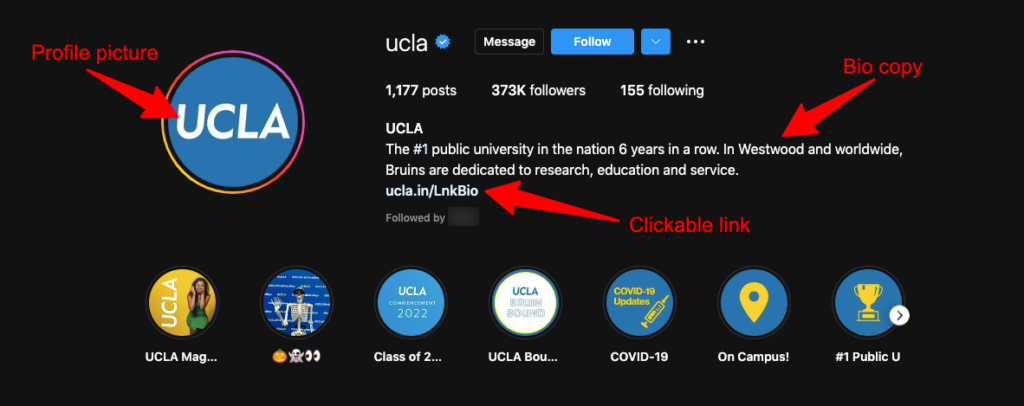
Follow these best practices to nail your profile:
- Choose an on-brand profile picture. It should be easily recognizable and align with your imagery on other platforms. For that reason, most brands use their logo. It’ll crop to a circle and should ideally be 320 x 320 pixels.
- Write an engaging bio. You’ve got up to 150 characters to explain what you do and, hopefully, persuade people to follow you.
- Add a link. Like TikTok, you can only add one link to your bio section. Pick carefully: would your blog landing page be a wiser choice than your homepage? If you can’t decide on a single link, consider using a tool like Linktree to add multiple links from a single landing page.
Read more about Instagram marketing strategy with these articles:
- 10 of the best examples of brands using Instagram Reels
- Instagram 101: How to get your small business started on the platform
- 14 tips that will help you master Instagram Live
- Instagram Reels 101: Everything your brand needs to know to get started
- Top Brands Killing It on Instagram
Pinterest Marketing Strategy
Pinterest is small fry compared to the likes of Facebook and Instagram, with a “mere” 465 million monthly active users. But it plays a key role in many social media strategies, particularly for brands with female-skewing audiences: over three-quarters of users are women.
1. Analyze Your Pinterest Audience
Pinterest gives social media marketers plenty of data for analyzing their audiences and understanding their preferences. However, you’ll need a Pinterest Business account to access it (don’t worry, it’s free to set up).
If you’ve already created a Business account or converted your existing one, find out about your followers by clicking Analytics at the top of Pinterest’s analytics page and choosing Audience Insights. From there, you can see the following information for either your total audience or people who’ve engaged with your pins in the last 30 days:
- Age
- Gender
- Location
- Device
- Top categories and interests
2. Set Pinterest Marketing Goals
Similar to TikTok and Instagram, the platform’s highly visual nature makes it a popular source of inspiration, with 61% of users saying Pinterest is where they go to start a new project — whether that means researching products, learning about new brands, or finding design tips.
Pinterest is also fantastic for expanding your reach. Because users often search for inspiration, they’re rarely beholden to a specific brand or retailer: 97% of the top Pinterest searches are unbranded, while 46% of weekly users have discovered a new brand or product on the platform.
3. Optimize Your Pinterest Profile
Creating an optimized profile is a cinch because there are only three elements you can edit. Follow these steps to nail your profile:
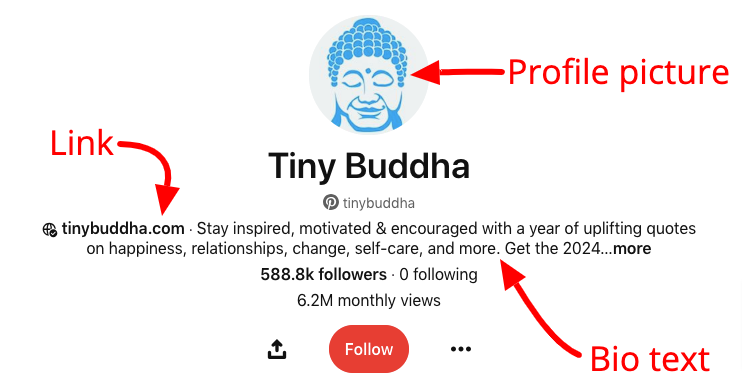
- Add a profile picture. Pinterest profile images are cropped into a circle and should be approximately 160 x 160 pixels.
- Write a Pinterest bio. Technically, you’ve got up to 500 characters to play with, which is practically a whole novel by social media bio standards. But the bio truncates at around 140 characters when viewed on a desktop, so be sure to front-load your most important information.
- Add a link. Like (most) other social platforms, Pinterest also allows you to link to an external page from your profile bio.
Reddit Marketing Strategy
Reddit has about 430 million monthly active users and attracts approximately 1.7 billion monthly visits. Given the platform’s obsession with obscure internet-speak and impenetrable memes and in-jokes, it’s hardly surprising that the audience skews younger, with 36% of users aged 18 to 29 (and just 13% aged 50+).
If you’ve ever spent time on Reddit, you’ll know it’s a very different proposition from the other platforms in this article. People follow topics, not brands, so you don’t really have your own audience — instead, you’ll be part of a much broader conversation.
People are rarely going to click on your profile page, and your posts don’t appear in an algorithmic feed or timeline; you’ll be reaching people via one of the site’s 100,000+ active communities, known as subreddits.
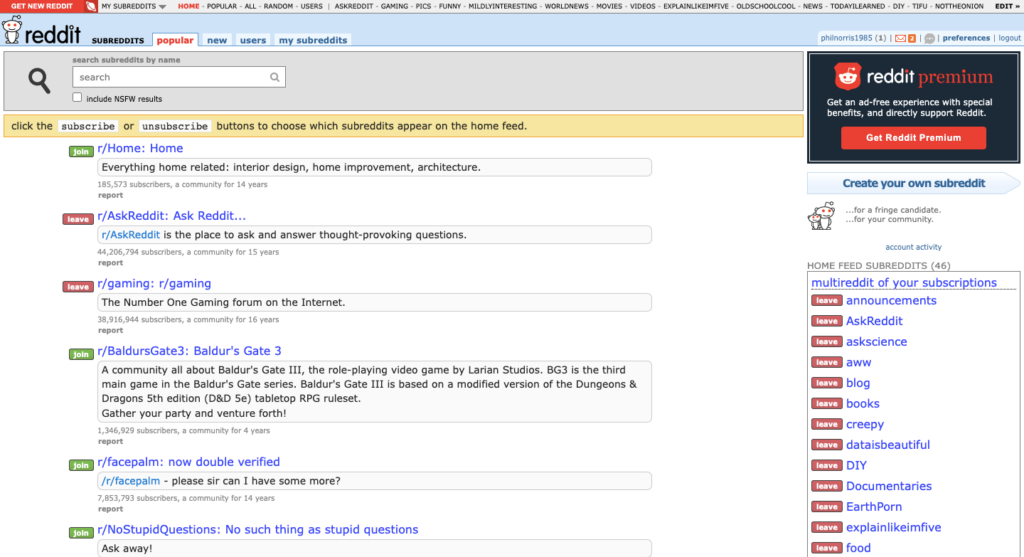
These vary from mainstream topics — like gaming and movies — to more niche pursuits like unconventional makeup and male fashion advice. Browse the complete list of subreddits here.
Marketing on Reddit requires a little out-of-the-box thinking. Because Redditors won’t appreciate you setting up a profile, joining a bunch of subreddits relevant to your product or service, and spamming them with promotional posts — chances are you’ll get shadow-banned or kicked off the platform entirely. Here are some tactics to help you get started:
1. Run Paid Ads
The most obvious way for brands to reach Reddit users is through an ad campaign. Reddit ads allow you to choose which subreddit(s) to target, allowing you to hit some highly specific audiences.
Reddit ads typically incorporate the following elements:
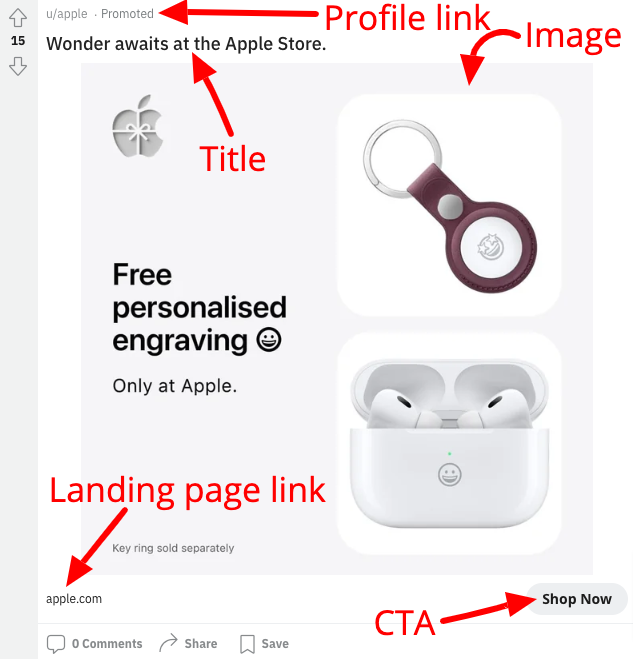
- Title. You’ve got up to 300 characters to play with, although Reddit recommends limiting your text to 90 – 100 characters to avoid truncation on different devices.
- Image. Reddit recommends using an image with dimensions of 1200 x 628 pixels, with a maximum size of 3 MB.
- Profile link. Like it sounds, this is a link to the advertiser’s profile page.
- Landing page link. The place your ad points to.
- CTA button. A clickable button that sends users to your campaign landing page. Reddit lets you choose from 13 buttons, including “Download,” “Install,” “Shop Now,” and “Sign Up” (find a complete list here).
2. Host a Reddit AMA Session
Marketing on Reddit doesn’t have to involve paying for ads. Another viable approach is to stage an “ask me anything” session (AMA), allowing Redditors to bombard you with questions.
You can either post in the dedicated AMA subreddit…

…or find a relevant post in a different community and comment with something like: “I’m (your name) from (brand), ask me anything.”
Bear in mind that this approach will only work if you’ve got an interesting story or a compelling reason for people to ask you questions. Don’t expect much traction if you’re just some brand.
3. Stage a Giveaway
If you sell a product or service that Redditors would love to get their hands on, running a giveaway in a relevant subreddit could be an excellent way to raise your brand awareness and get more people interested in what you do.
However, you’ll need to clear your contest with the mods first. They yield all the power, and you’ll almost certainly get banned if they don’t like what you’re doing.
Facebook Marketing Strategy
Sure, Facebook is no longer everyone’s default social platform of choice. But with over three billion monthly active users, it’s still the world’s largest social media network, so few marketers can afford to overlook it.
In particular, Facebook has become a vital resource for local businesses. Facebook’s figures show that 1.6 billion people worldwide are connected to a small business on the platform. That makes Facebook a strong fit for campaigns aimed at audiences in specific geographies or with niche interests.
Here are three steps to developing your Facebook social media strategy:
1. Analyze Your Facebook Audience Demographics
With any strategy for social media marketing, the first step is to understand your Facebook audience:
- How old are they?
- Where do they live?
- What do they do for a living?
- When (and where) do they use Facebook?
- What would motivate them to engage with your content?
If you already have an active Facebook Page with followers, you can answer all those questions — and more — using Meta Business Suite’s Audience Insights tool. It allows you to deep-dive into the demographics of your current Facebook followers, including:
- Location
- Age and gender
- Other brands and pages they like
- Education level
- Relationship status
- Hobbies and interests
- Purchase history
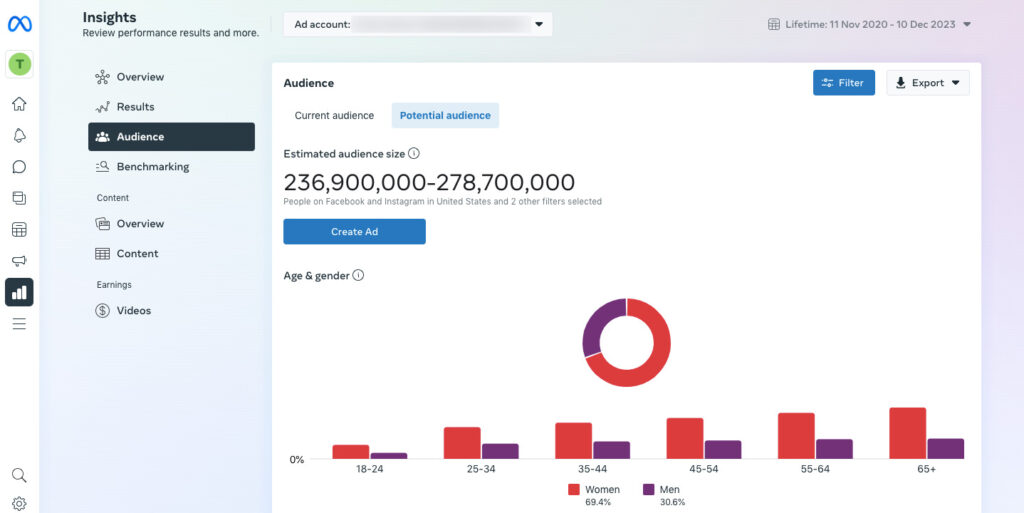
Insights will tell you if your actual Facebook audience aligns with the audience you want to target. If it does, keep doing what you’re doing — it’s working. If not, it’s time to adjust your strategy.
2. Set Facebook Marketing Goals
You know who you’re reaching. Now it’s time to define why you’re reaching them.
For the majority of marketers, the answer will be: “To sell them something.” But your goal could also be to:
- Grow your brand
- Provide customer support
- Drive foot traffic to a real-world location
Remember, your goals for Facebook should align with your overarching business objectives. If your board is only interested in revenue, they likely won’t be interested in “vanity metrics” like follower count and engagement levels.
It’s also important to consider the typical audience on Facebook. Once beloved (or at least tolerated) by most social media users, the platform has seen a significant drop in usage among younger demographics, with just 32% of teens saying they ever use it.
Research from the University of Alabama in Huntsville discovered that a primary driver for older demographics to use social media is to compensate for the lack of in-person interactions. So marketers may see success in building online communities through Facebook, prompting followers to share photos, take part in surveys, or join in with conversations.
3. Optimize Your Facebook Page
Your Facebook Page is the hub of your Facebook social media strategy. Across all countries, two-thirds of Facebook users say they visit the Page of a business in their area at least once a week.

Whether you already have an established Facebook Page or need to create one from scratch, follow these best practices to drive visibility and engagement:
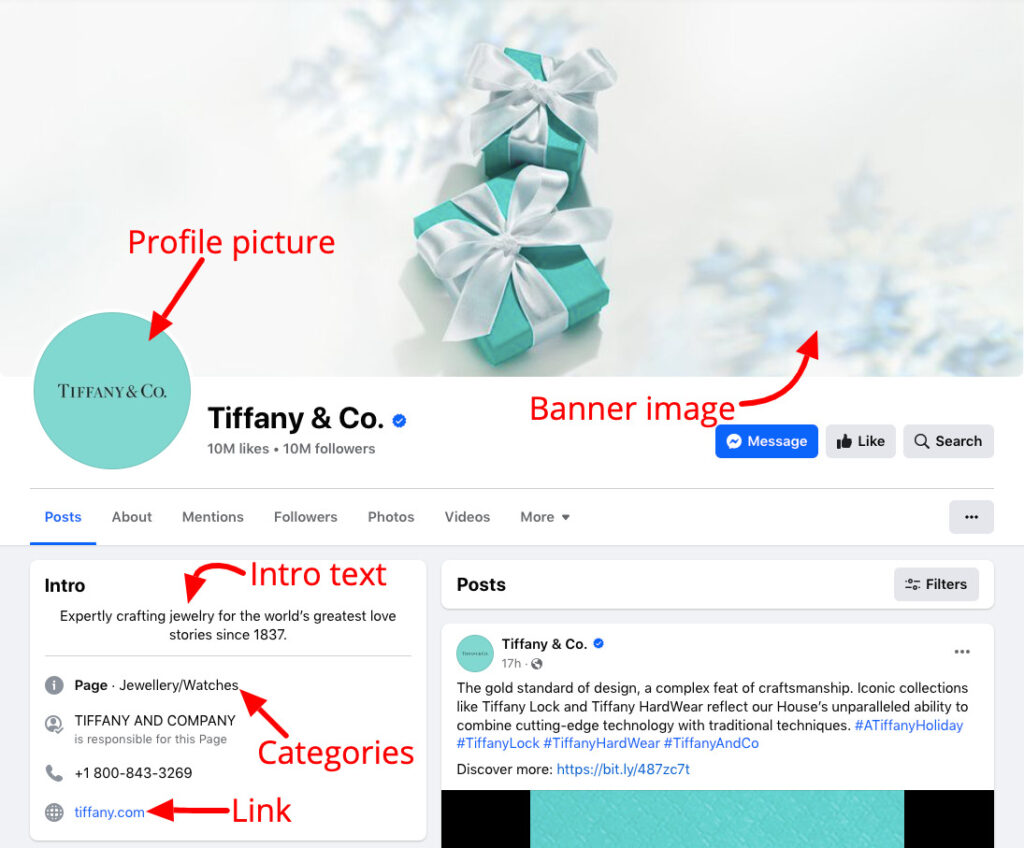
- Add a profile picture. This square image displays at different dimensions on different devices, so make sure yours is at least 360 x 360 pixels.
- Include a banner image. Otherwise known as your cover photo, this should be 851 x 315 pixels.
- Write your intro text. You’ve got up to 101 characters to describe who you are and what you do.
- Add a link. Either link to your homepage, a specific landing page, or a link-in-bio tool — whatever makes the most sense.
- Choose relevant categories for the About section. You can add up to three categories to your Page to help people find your organization when they search for your products or services. Make them as specific as possible (e.g., if you make cakes, choose “bakery” or “dessert shop” rather than “local business”).
- Insert a CTA button. Facebook offers several CTA button options designed to help point users toward your website or perform some other action, such as contacting you through Messenger or booking a service. Choose the option that best fits your goals.
- Add your address. If you have a physical location, publish it on your Facebook Page. Do you have multiple locations? Create store Pages to help customers find their nearest branch.
- Switch on recommendations. This setting allows people to submit reviews and ratings on your Page. Reviews are precious for building trust, with 89% of consumers reading them before buying.
Read more about Facebook marketing strategy with these articles:
- 16 Stellar examples of high-converting Facebook ads
- How to Build and Maintain an Engaged Facebook Community Group
- 7 Brands Achieving Killer Results on Facebook
X (Formerly Twitter) Marketing Strategy
With 666 million monthly active users, X is comparatively small. But it’s still the platform of choice for high-profile users, from politicians to pop stars.
For better or worse, Twitter has always been a hotbed of discussion. New owner Elon Musk says he views the site as “the digital town square where matters vital to the future of humanity are debated.” Content that works best on X is most likely to prompt a response — whether you’re telling a story, giving an opinion, predicting a trend, or breaking a news story.
Follow these three steps to nail the fundamentals of your X marketing strategy:
1. Analyze Your X Audience Demographics
Again, digging into your audience is your first port of call. Who are you trying to target? And if your organization already has a Twitter profile, does the existing audience align with your expectations?
Once upon a time, you could access all this information through the platform’s standard analytics dashboard. But now, you need to be verified — which means either subscribing to X Premium (starting at $3 per month) or Verified Organizations (priced at $1,000 per month plus tax, and a further $50 per month plus tax for each additional affiliate in the US).
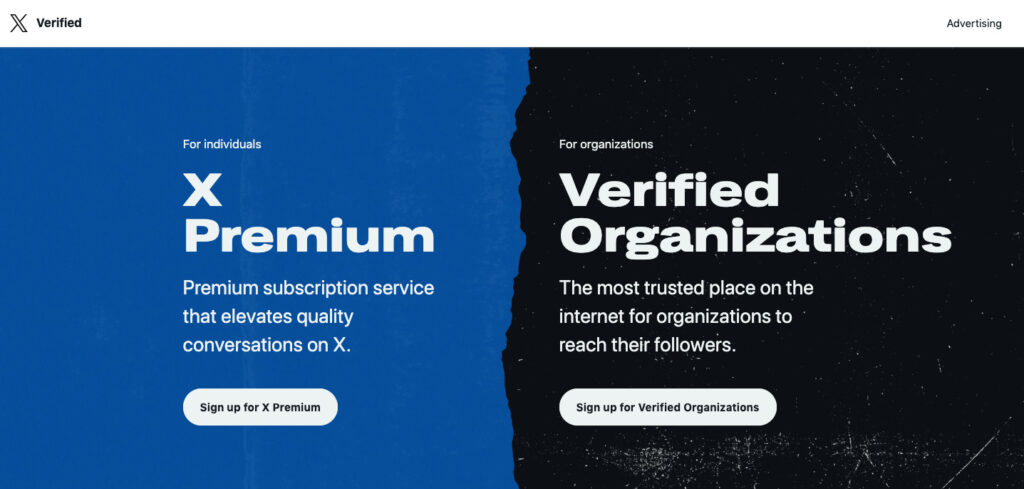
You can sign up for either of those packages via the dedicated X Verified landing page .
Having signed up, you can check out your audience demographics by visiting the Twitter for Business homepage and:
- Navigating to Advertising > Analytics.
- Scrolling down to “Business Insights Dashboard.”
- Clicking Visit Yours Now.

Here, you’ll find a dashboard containing various insights, including the best time to tweet, the most popular topics, and your most influential followers. For more information on your followers, click the Audience tab, then Your Followers > Demographics, where you’ll find a breakdown of their:
- Gender
- Country
- Region
Not the most comprehensive audience overview, but definitely better than nothing.
2. Set X Marketing Goals
Let’s talk about goal setting. To set meaningful goals for your X marketing strategy, you need to understand the platform’s strengths (and weaknesses).
People don’t typically use X for buying inspiration, so it’s not a natural fit for sales and revenue-focused objectives. But it’s widely seen as a place to learn something, with 69% of users getting news from X and 70% accessing breaking news via the platform.
That makes the platform a strong fit for promoting high-quality content — think original research and thought leadership — and using it to build brand awareness and generate leads.
3. Optimize Your X Professional Profile
If you’re paying for an X Premium or Verified Organizations, you might as well make the most of it by optimizing your profile. Help it stand out by following these steps:
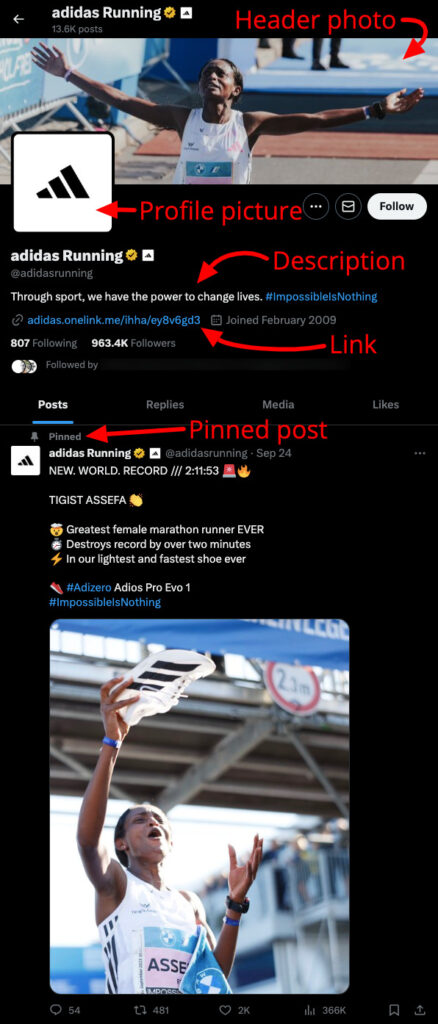
Once you’ve set up your Professional account, follow these steps to optimize it:
- Set your profile picture. This should be an image that visually represents your brand and, importantly, looks good in a circle. Most likely, it’ll be your logo. Twitter’s recommended dimensions are 400 x 400 pixels.
- Choose a header photo. While your logo may never change, think of your header photo as a billboard for your products or services. Change it as often as you want. The recommended dimensions are 1,500 x 500 pixels.
- Write your bio. Bios are a 160-character elevator pitch for your brand or business. The bio section can (and should) include a link to your website, location, and opening hours (if relevant).
- Add a link. This could be to a specific landing page, other social media accounts, or a link-in-bio tool pointing visitors toward multiple other pages or platforms.
- Pin a tweet. Your pinned tweet stays at the top of your feed until you unpin it. Choose something that speaks to your biggest current campaign, such as an event you’re planning or your latest product launch.
LinkedIn Marketing Strategy
LinkedIn might not be able to compete with the likes of Facebook and TikTok when it comes to monthly active users, but those users definitely pack plenty of punch. Indeed, LinkedIn data shows that 65+ million decision-makers use the platform. These steps will help you craft your LinkedIn social media strategy:
1. Analyze Your LinkedIn Audience Demographics
We’re going to assume you’ve already got a LinkedIn Page for your organization. (If not, your first step is to answer the same types of audience-themed questions we laid out in the section on Facebook marketing strategy).
LinkedIn’s audience analysis tools are second to none. Login to your Page, click the Analytics tab, and navigate to Followers to access insights on:
- Job function
- Company size
- Industry
- Location
- Seniority
Helpfully, you can view the same information about people who’ve visited your LinkedIn Page without following you.
Follower demographics can offer some invaluable insights. For instance, say 50% of visitors to your Page are at the director level, but only 20% of your followers are directors. Perhaps your LinkedIn Page isn’t doing enough to convert those interested parties into fully-fledged followers. Or maybe your most recent posts have been more relevant to a director-level audience.
2. Set LinkedIn Marketing Goals
When it comes to lead generation, LinkedIn is in a class of its own, with 40% of B2B marketers stating LinkedIn is the most effective channel for driving high-quality leads. So if lead gen aligns with your broader marketing objectives, it should almost certainly be the main (or sole) purpose of your LinkedIn strategy.
But what if lead generation isn’t relevant to your business goals? You could still leverage LinkedIn’s hiring power. LinkedIn data shows that 140 job applications are submitted via the platform every second, and six people are hired through the site every minute.
3. Optimize Your LinkedIn Page
The first step to optimizing your LinkedIn Page is adding information in every (relevant) section. Complete Pages generate 30% more weekly views than incomplete Pages, so this is an easy win.
Beyond that, follow these best practices to craft a well-optimized LinkedIn Page:
- Add your logo. Got a logo? Add it to the relevant box, with recommended dimensions of 300 x 300 pixels.
- Add a cover photo. Your cover photo should speak to the purpose of your organization, and it should measure 1,584 x 396 pixels.
- Fill out relevant information fields. LinkedIn has several organizational information fields covering your location and what you do. Complete all that are relevant.
- Write an overview. Your overview is a 2,000-character biography of your brand (although the text truncates at around 320 characters). Use this section to spell out your mission and vision.
- Pick a CTA button: LinkedIn allows you to add one of five CTA buttons to the top of your Page. Choose the most relevant from the Learn More, Register, Sign up, and Visit website.
Read more about LinkedIn marketing strategy with these articles:
Content Planning
You won’t get far if you start every day with no idea about what you’re going to share on your various platforms; you’ll likely end up with a bunch of disconnected posts.
Instead, take the time to create a content calendar that details your posts days, weeks, or even months in advance. That way, you have all the time in the world to gather quality creatives and write engaging captions that lead to lots of engagement, traffic, leads, and sales.
Or at least that’s the idea.
Follow these steps to build your content calendar:
- Audit your competitors. Which social platforms do they use? How often are they posting? What types of content do they share? How much engagement are they generating? This research will help you understand what works (and doesn’t) in your niche.
- Choose the most relevant platforms for your audience and goals. Unless you have a huge social media budget, you’ll likely need to make smart use of limited resources, so focus on two to three social networks. You can always add more down the line.
- Set goals for each platform. Chances are, your overarching goal is to increase sales or revenue. But different platforms will contribute in different ways. For instance, Pinterest and TikTok might help you reach new audiences, whereas Instagram could be about persuading your existing followers to buy. Set appropriate goals for each platform so you can assess your performance and optimize your strategy.
- Decide on a content ratio. Social media is about starting a conversation, so don’t be all me, me, me. Choose how often you’ll post certain types of content. There are various schools of thought here. For instance, the 4-1-1 approach states of every six posts you share, four should be entertaining or educational, one should be a “soft sell” for your product or service, and one should be a harder sell.
- Start with a template. There are plenty of free social media content calendars out there. Save yourself time by using one of them to create your calendar (feel free to add new columns and titles to make it as relevant as possible to your team and goals).
Read more about content planning in these articles:
- 9 Strategies For Creating an Effective Social Media Content Calendar
- How to Create & Manage an Effective Content Calendar in Higher Ed
- 29 of the Best Free Content Calendar Templates
Content Creation
You’ve analyzed your audience, defined your social media marketing goals, and optimized your profile pages. Now it’s time for the exciting part: creating content.
This step can feel overwhelming. Where to start? But don’t worry because we’ve rounded up five inspiring social media strategy examples for content creation:
1. Leverage User-Generated Content
Wouldn’t it be great if your audience could create all your content for you?
User-generated content (UGC) isn’t just a time-saver for marketers; it’s amazing for driving sales. According to Stackla, four in five consumers say UGC is “highly influential” to their purchasing decisions, compared to just one in eight who say the same about branded content.
GoPro is a master at UGC. It runs daily competitions that give budding photographers a chance to have their work seen by the brand’s audience of 19.6 million Instagram followers:
View this post on Instagram
2. Host Q&A Sessions
Want to make your social media marketing more social? Question-and-answer sessions are the perfect solution. Ask your audience a bunch of questions and join in with the conversation when people reply, like HubSpot does in this example:
Question for our community: What can leaders do to improve their emotional intelligence?
— HubSpot (@HubSpot) October 4, 2022
3. Share Reviews & Testimonials
If your board got their way, you’d likely spend all your time posting about how amazing your products are. Unfortunately, that gets old quickly.
One solution is to share reviews and testimonials. They can be highly impactful, with TrustRadius research revealing that 67% of buyers describe reviews as a “very important consideration” in their path to purchase. Here, Brooklinen demonstrates how reviews can be an excellent fit for your social media content plan:
4. Repurpose Content for Social Media
You’re already creating quality content for your website. So why not turn it into something more relevant to social media audiences?
In this example, Hootsuite has repurposed a recent blog post, pulling out some of the key information, incorporating it into an Instagram-friendly slideshow, and adding some snazzy visuals:
View this post on Instagram
Note how it urges readers to find out more by clicking the link in its Instagram bio.
5. Help Your Audience Solve Common Problems
Your audience follows you for advice on something, whether how to dress for a fall wedding or file your taxes correctly. So why not use your expertise to create shareable content?
Go Clean Co does this by producing regular how-to guides for Instagram Stories focused on different cleaning projects. In this example, it shows followers how to clean a car:
Learn more about content creation with these articles:
- 15 of the best free content calendar templates
- 22 best places for finding content to share on social media
- Nine strategies for creating an effective social media content calendar
- Readability: How to ensure your blog content doesn’t scare off visitors
- Six ways to create marketing content that stands out from the noise
- Capitalizing on awareness: 5 ways to create content for the top end of your funnel
- 4 tips for amplifying your digital content
- Top 7 Considerations for choosing high-performing blog topics
- 10 of the Best Brand Storytelling Campaigns of 2022
Influencer Marketing Strategy
Influencer marketing and social media marketing are natural bedfellows. After all, the vast majority of influencers have large social followings. Here are four simple steps to building an influencer marketing strategy:
- Set campaign goals. Start by defining what you want your influencer strategy to achieve. Most influencer campaigns are geared toward driving sales. But influencer marketing can also help you generate leads, reach new audiences, and grow your brand.
- Choose your campaign type. Influencer marketing is an umbrella term that covers a wide range of campaign types, from one-off guest posts to full social media takeovers. Use your objectives to identify the most suitable formats for your influencer strategy.
- Research influencers. Obvious as it sounds, your campaign will only work if you find influencers with relevant audiences and values. Fortunately, many tools can help you find influencers, such as HypeAuditor, Affable.ai, and Upfluence.
- Involve influencers in ideation and content creation. Quality influencers don’t want to promote any old content blindly. Reach out to them before the ideation stage, encourage them to share ideas, and take their feedback onboard.
Learn more about building an influencer marketing strategy with these articles:
- How to find the best influencer for your brand
- 10 most effective ways to negotiate with influencers
- 10 great examples of how brands are leveraging micro-influencers
- 7 must-know tips for effective influencer outreach
Social Media Tools
Building strategies for social media marketing is a lot of work, and running your campaigns takes even longer.
Fortunately, there are many excellent social media tools you can lean on to handle all the legwork and streamline communications. Here are 15 of our favorites, split into five of the most common social media-related tasks:
Social Media Scheduling
Scheduling posts across multiple platforms is highly time-consuming. So no wonder it’s the most commonly automated of all digital marketing-related tasks. Use these tools to lighten the load:
Buffer
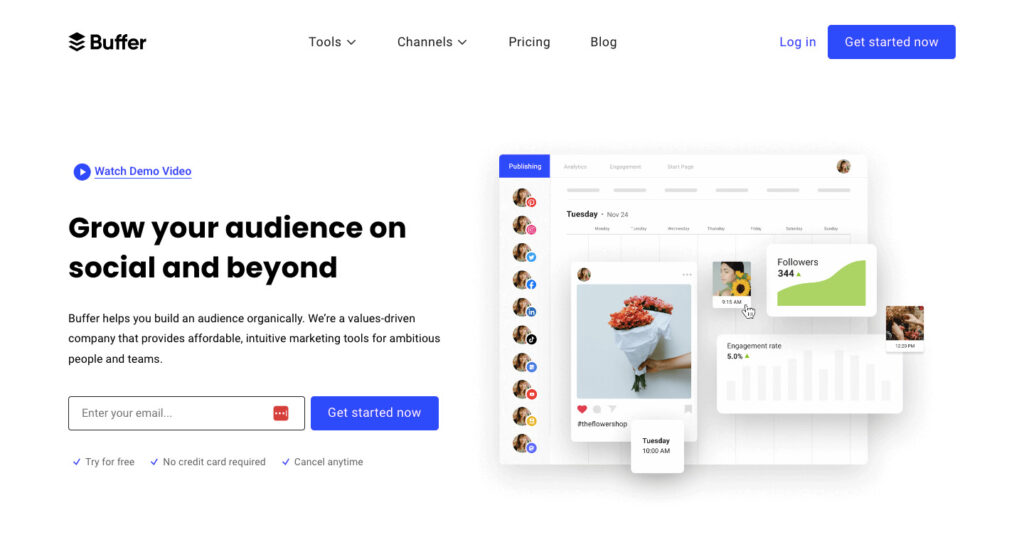
- Key features: Buffer lets you schedule and publish content across 10 different platforms, including Facebook, Instagram, LinkedIn, and TikTok. Its built-in AI assistant can help you come up with new content ideas, repurpose existing posts, rewrite copy in any style you like, and translate your posts into different languages.
- Pricing: Buffer has a free plan for connecting up to three channels. Paid plans $6 per channel per month.
Hootsuite
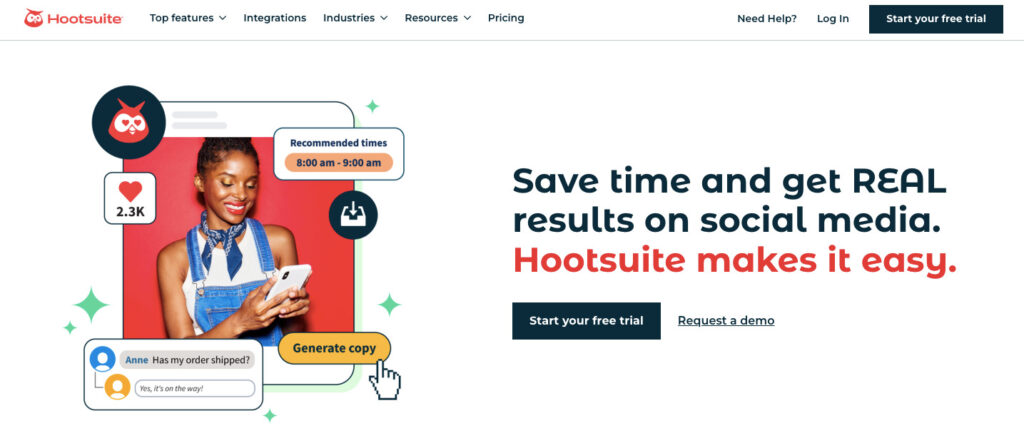
- Key features: With Hootsuite, you can schedule posts on Facebook, Instagram, Twitter, LinkedIn, TikTok, YouTube, and Pinterest. It’ll even tell you what times to post to generate the highest engagement.
- Pricing: Hootsuite doesn’t have a free plan, so its cheapest option costs $99 per month, including up to 10 social profiles.
CoSchedule
- Key features: CoSchedule lets you create, schedule, publish, and measure posts across eight platforms, including Facebook, Instagram, LinkedIn, Pinterest, and TikTok. The tool has a built-in AI social assistant capable of generating ideas and creating content.
- Pricing: Use CoSchedule’s content calendar tool free of charge or pay from $19 per user per month to access its content creation, scheduling, and reporting features.
Social Media Tracking & Reporting
Proving the ROI of social media campaigns has consistently been rated as one of the biggest challenges for social media marketers.
To overcome that challenge, you need a robust analytics and reporting tool. Each social platform has its built-in tools, but if you want a more joined-up view of your social media efforts, these tools can help:
Zoho Social
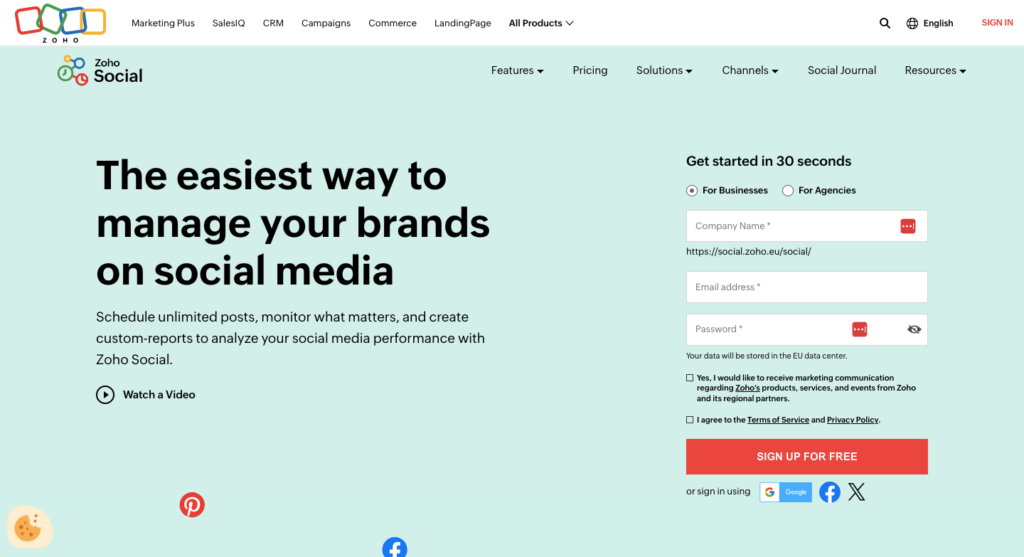
- Key features: Zoho Social offers analytics tools for Facebook, Instagram, LinkedIn, Twitter, and Google My Business. Use the platform to better understand your audience and identify your top-performing content across each channel.
- Pricing: There’s no free Zoho Social plan. Paid plans start at €10 per month for one brand and up to 10 channels.
Google Analytics
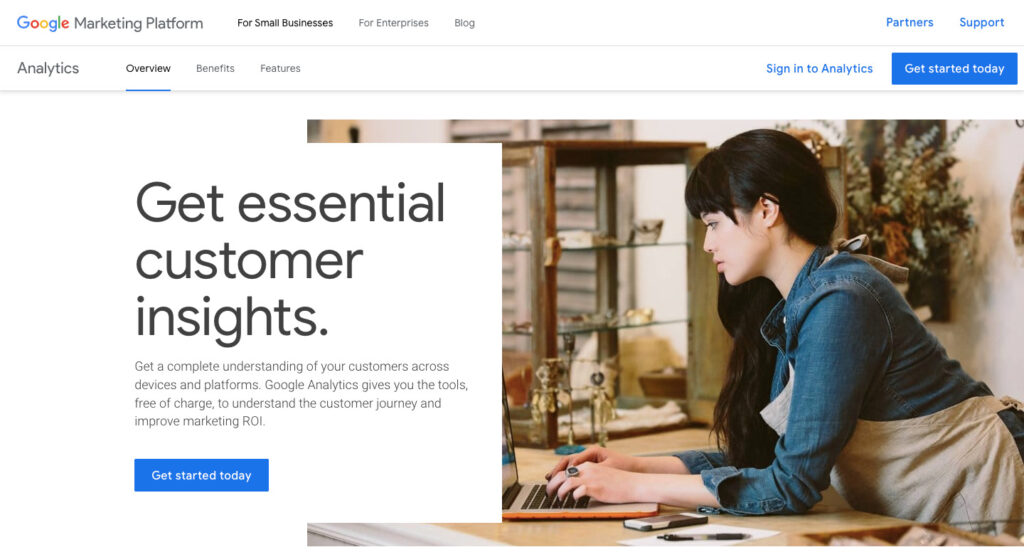
- Key features: Google Analytics shows you how much traffic you’re generating, where it comes from, and what happens when people land on your site. It also provides a ton of audience information, including their location, device type, and interests.
- Pricing: Google Analytics is totally free for everyone other than enterprise-level marketing teams.
Sprout Social

- Key features: Sprout Social is a heavyweight social media management platform that’s great at visualizing all your social data in charts and graphs to help you pick out the most important information.
- Pricing: It’s not the cheapest platform, with prices starting at $249 per month (plus a further $199 per month for each additional user).
Graphic Design
In an ideal world, you’d have a full-time graphic designer by your side just waiting to help you out with eye-catching creative whenever you need it. Unfortunately, many organizations lack the bandwidth or budget (or both) to make that a reality. However, there are lots of tools that allow total amateurs to craft high-quality designs, such as:
Canva
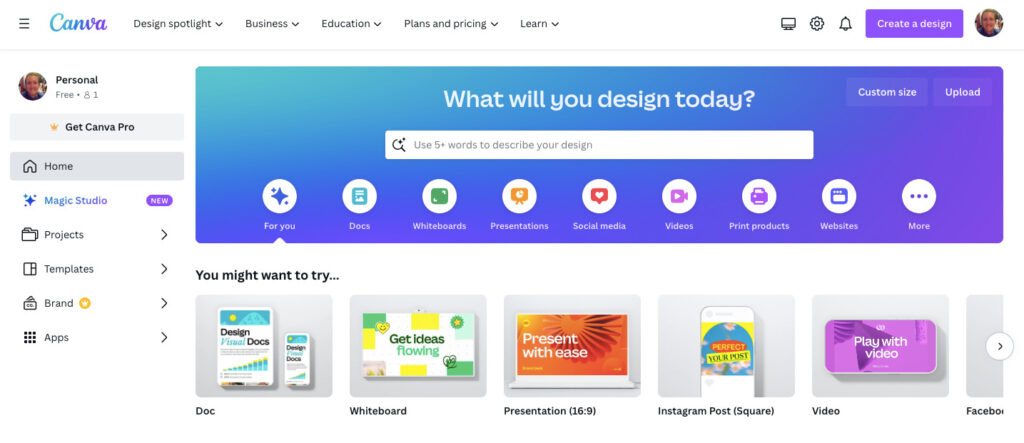
- Key features: An easy-to-use graphic design tool for non-specialists, Canva features tons of free templates, graphics, and elements to help bring your social media content to life.
- Pricing: Canva offers plenty of free functionality, or you can upgrade to a paid account from $14.99 per month.
Adobe Express
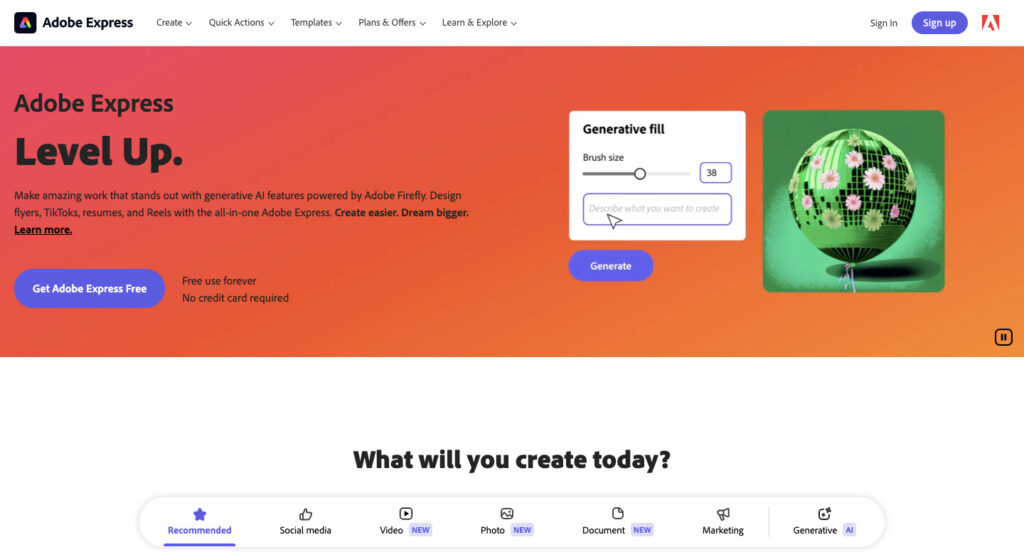
- Key features: Express is Adobe’s answer to Canva, providing a bunch of user-friendly tools to help people who aren’t professional graphic designers create flyers, TikToks, Instagram Stories, logos, and a host of other marketing materials.
- Pricing: Adobe Express offers a free plan for individuals, or business users can get started from $6.49 per seat per month for at least two seats.
CorelDRAW
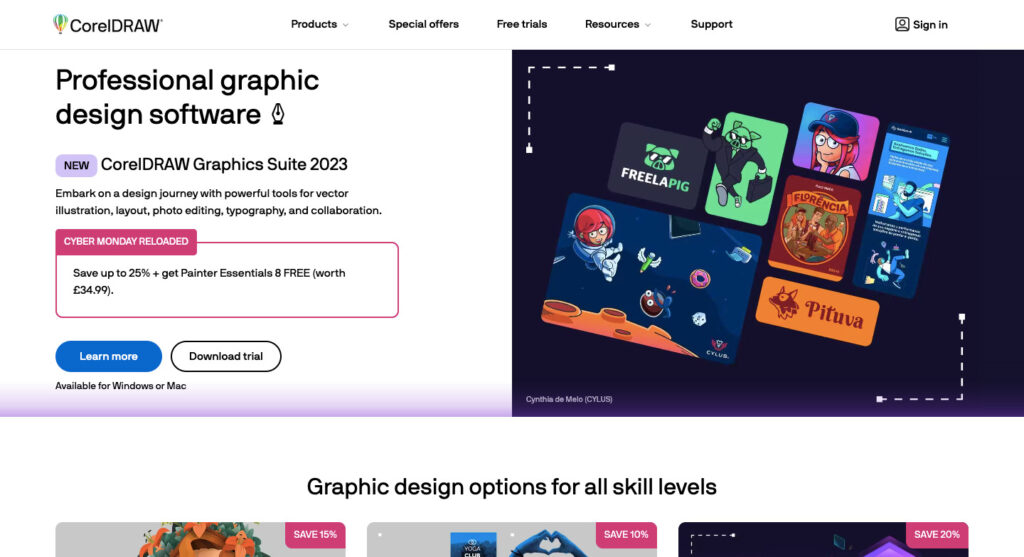
- Key features: CorelDRAW is a powerful tool for vector illustration, layout, photo editing, typography, and collaboration.
- Pricing: Download CorelDRAW for $269 for up to four accounts, or get discounted rates on higher purchase volumes.
Collaboration & Communication
Social media marketing is rarely a one-person task. You might need to work with everyone from account managers and graphic designers to content writers and videographers. That’s too much collaboration for your email inbox to handle, so consider using one of these communications platforms:
Asana

- Key features: Asana is a project management tool that allows users to track progress on individual tasks and communicate with stakeholders. Projects can be organized as Kanban boards, lists, timelines, calendars, and Gantt charts.
- Pricing: Asana offers a free plan for individuals and small teams. Paid plans start at $10.99 per user per month.
Slack
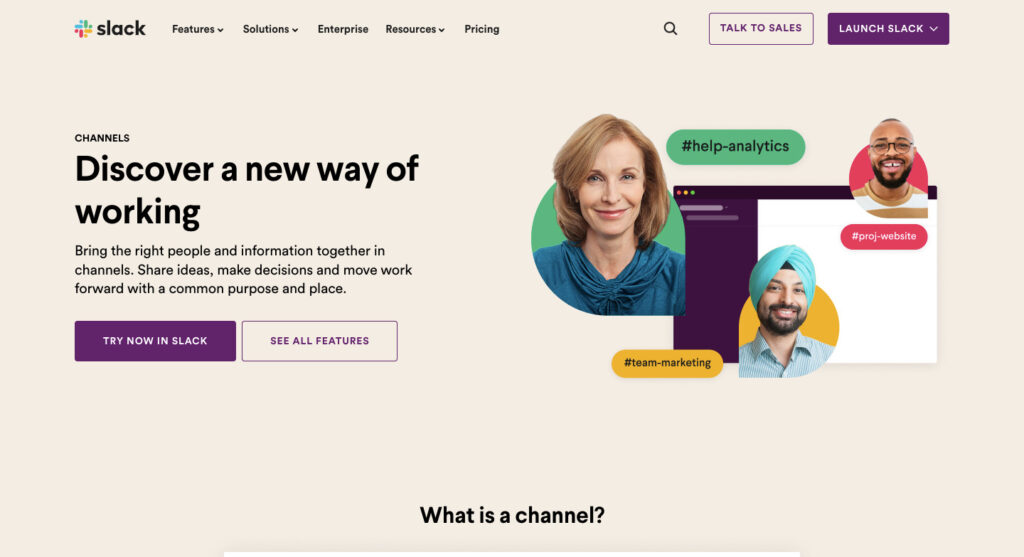
- Key features: Slack is a workplace messaging platform that brings together team members and other stakeholders in channels dedicated to different projects and topics. You can even start live voice conversations using Slack huddles.
- Pricing: Slack offers a free plan for one-on-one huddles and 90-day access to file and message history. Paid plans start at $7.25 per person per month.
Trello
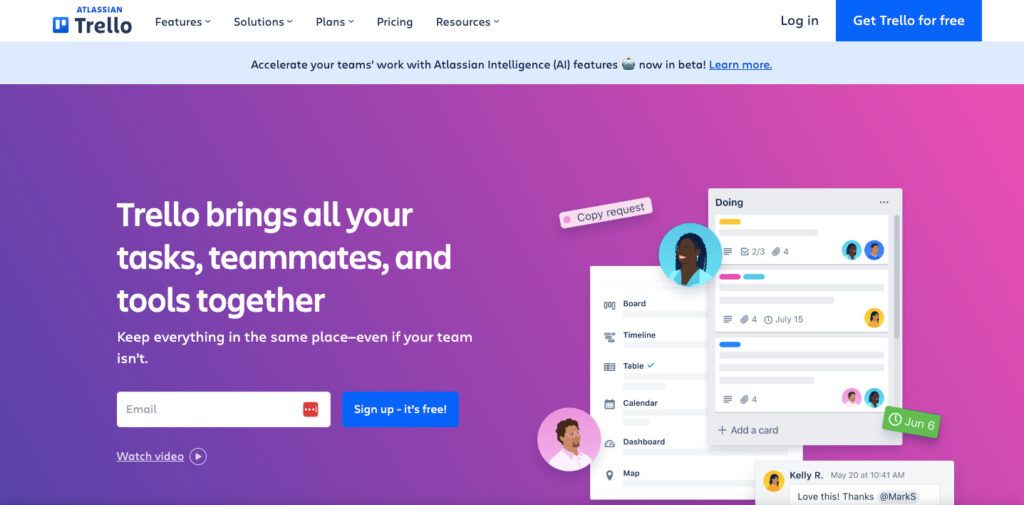
- Key features: Trello is a simple and flexible project management tool for displaying tasks through boards, lists, and cards.
- Pricing: Trello’s free plan includes up to 10 boards per workspace. Paid plans are priced from $5 per user per month.
Content Curation
You can’t be expected to develop a unique idea for every social media post across all the platforms you manage. And nor should you, because there’s a whole world of relevant content out there that your audience would love to see — you just need to find it. These tools can help:
BuzzSumo
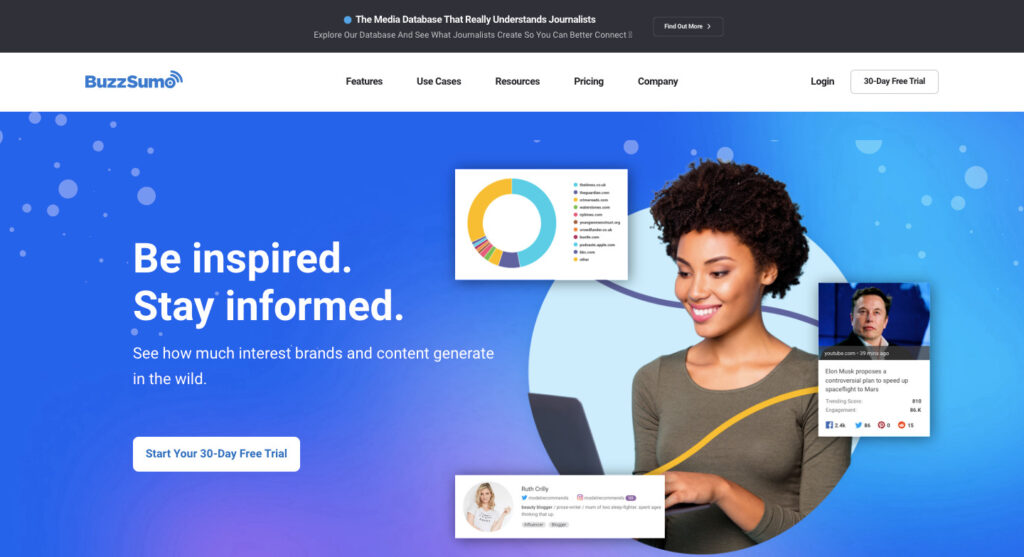
- Key features: With BuzzSumo, you can find content ideas by tapping into trending topics, SEO insights, and real user questions from forums. Once you’ve identified a topic, it can also generate thousands of relevant keywords.
- Pricing: Starts at $199 per month for a single user.
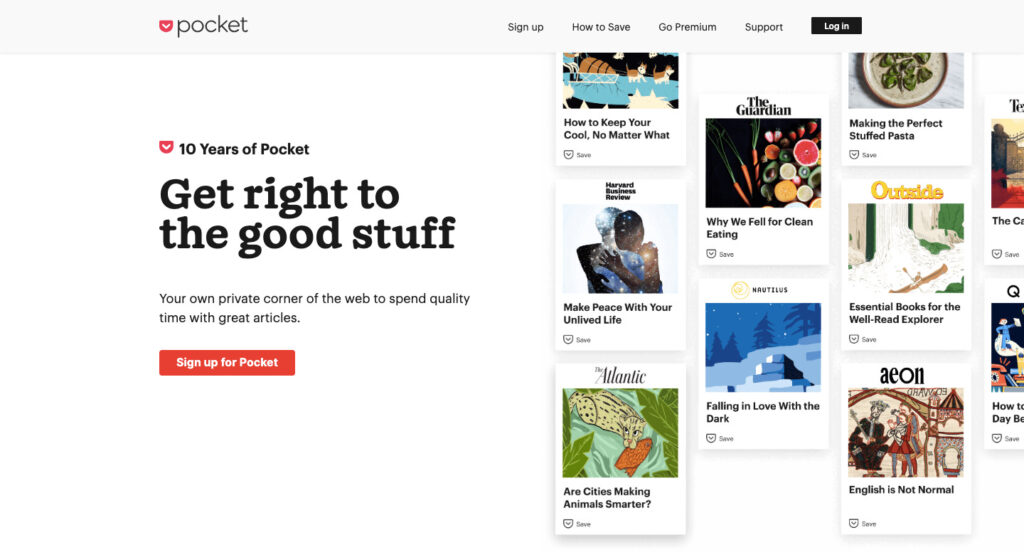
- Key features: Pocket lets you save interesting articles to a personal library so you can come back to them when you’re working on content planning. Categorize saved articles with tags to easily track them down again later.
- Pricing: Get started with a free account, or upgrade to Pocket Premium for $4.99 per month to build a permanent library of everything you’ve saved.
Feedly
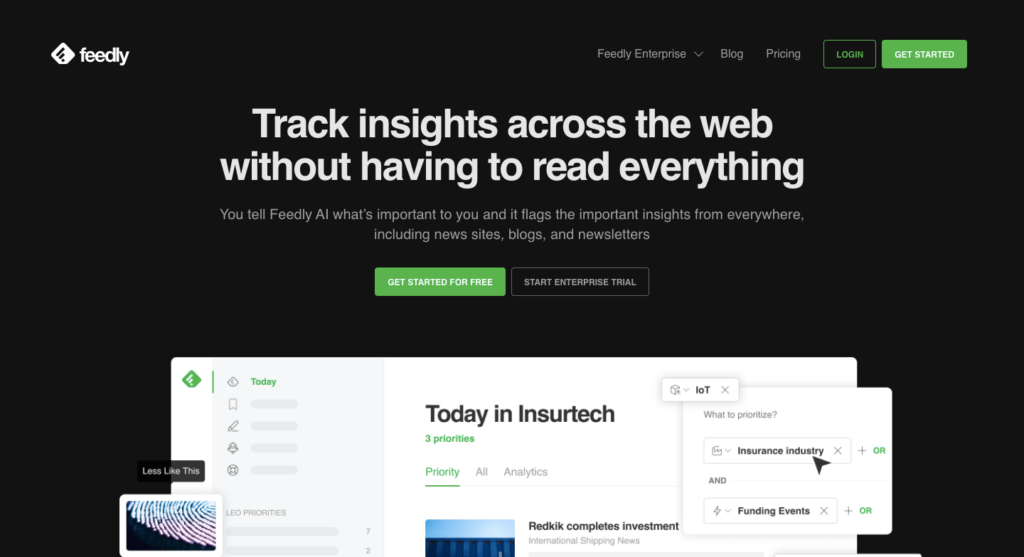
- Key features: Feedly is an AI tool that flags the most important information and insights from blogs, publishers, and newsletters based on your content preferences.
- Pricing: Feedly Pro is priced at $6 per month and includes up to 1,000 RSS feeds.
Learn more about social media tools with these articles:
- Top 19 social media listening tools for your best audience insights
- 11 time-saving tools for small social media teams
- 10 tools to help you run a highly successful influencer marketing program

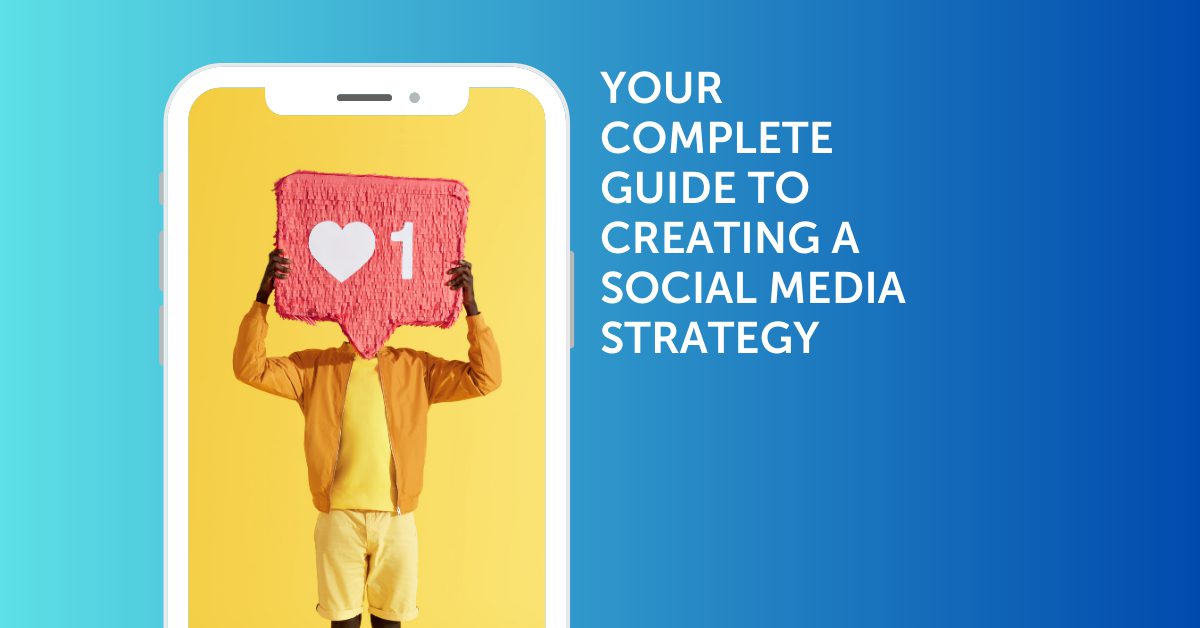
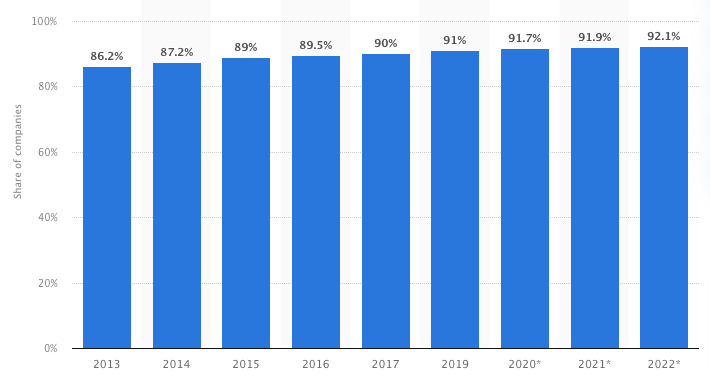 Image source
Image source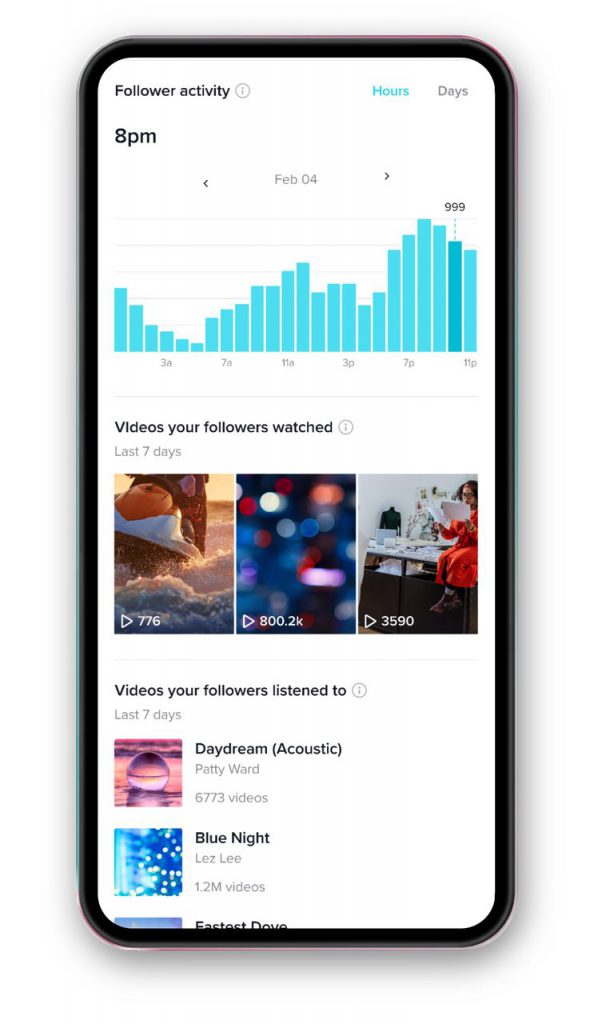 Image source
Image source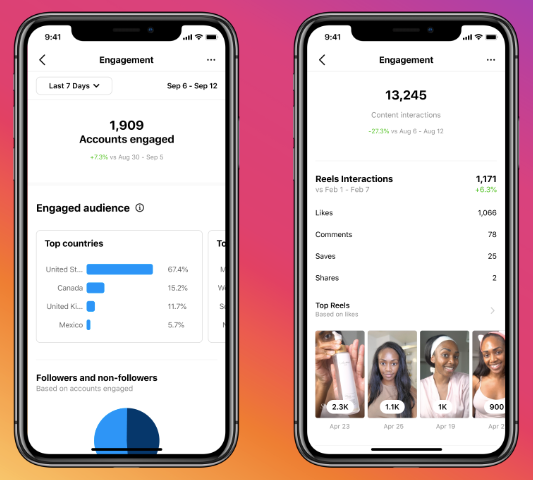 Image source
Image source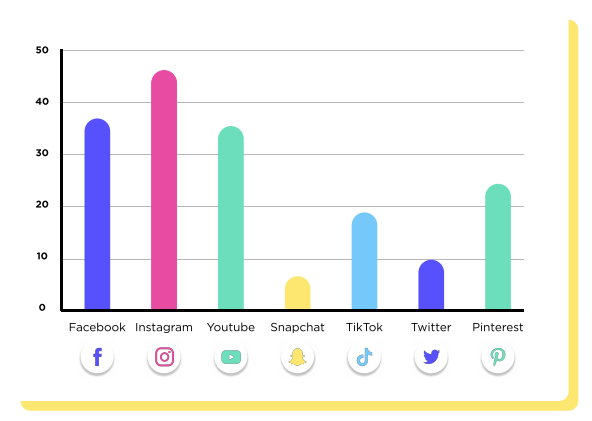 Image source
Image source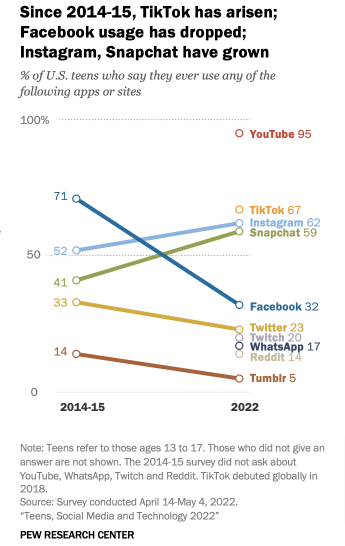 Image source
Image source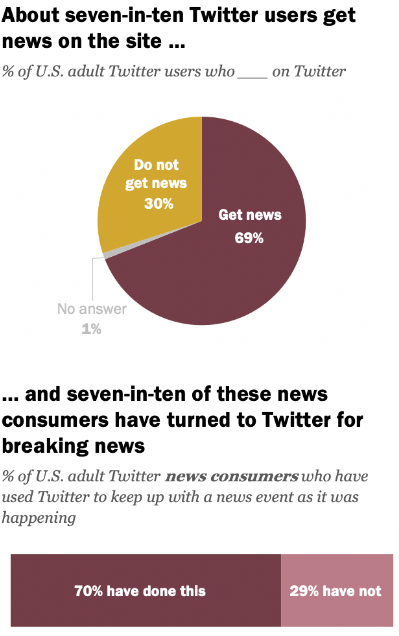 Image source
Image source Image source
Image source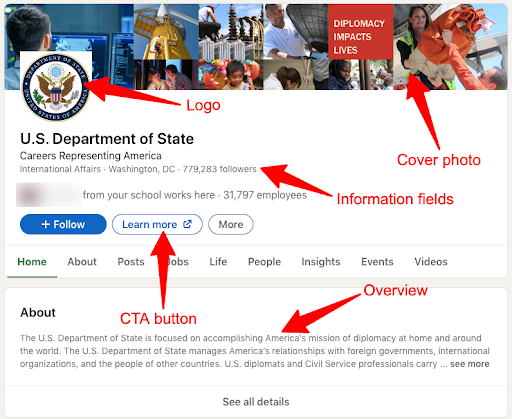 Image source
Image source Image source
Image source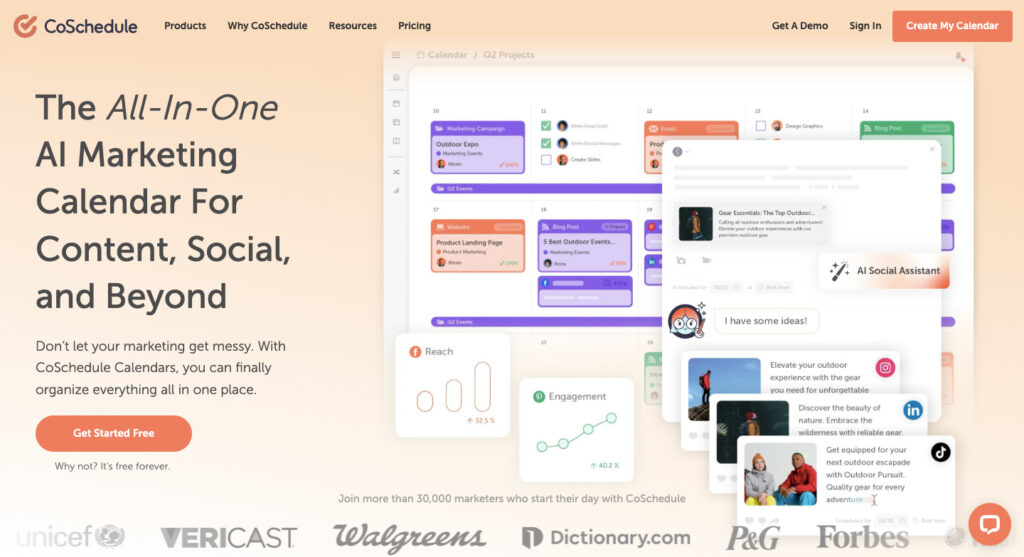
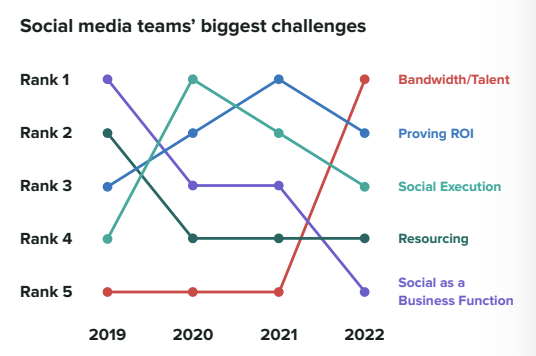 Image source
Image source